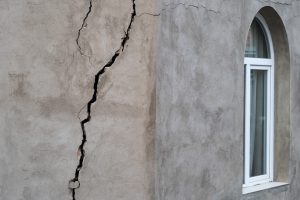Introduction
In the world of construction and engineering, the integrity of structures forms the foundation for safe and functional built environments. From towering skyscrapers to humble abodes, the importance of assessing and addressing structural defects cannot be overstated. In this blog post, brought to you by Meliusense, we delve into the realm of structural defects and explore the critical process of integrity evaluation, shedding light on why it matters and how it’s done.
Understanding Structural Defects
Structural defects encompass a wide range of issues that compromise the stability, safety, and functionality of a building or infrastructure. These defects can arise from various factors, including design flaws, material degradation, poor workmanship, natural disasters, and even the test of time. Common types of structural defects include:
- Cracks and Settlement: Cracks in walls, floors, or ceilings can indicate issues with foundation settling or movement, often caused by soil instability or inadequate support systems.
- Corrosion and Deterioration: In structures constructed using metals or concrete, corrosion and deterioration due to exposure to environmental factors like moisture, chemicals, and pollutants can weaken the materials over time.
- Weak Joints and Connections: Inadequate welding, bolting, or fastening of structural components can lead to weak joints and connections, increasing the risk of collapse during stress events.
- Inadequate Reinforcement: Insufficient reinforcement of concrete or other materials can result in structures that can’t bear the intended load, potentially leading to catastrophic failures.
- Design Flaws: Poorly executed or flawed initial designs can result in disproportionate stress distribution, unanticipated loadings, or other issues that affect the structure’s overall stability.
Importance of Integrity Evaluation
The evaluation of structural integrity is a crucial step in ensuring the safety of occupants and the longevity of built structures. This process involves a comprehensive assessment of a building’s physical condition, identifying existing defects and potential vulnerabilities. Key reasons why integrity evaluation matters include:
- Safety Assurance: Regular integrity evaluation helps identify hidden defects and weaknesses that could lead to accidents, collapses, or life-threatening situations if left unattended.
- Risk Mitigation: By proactively identifying and addressing structural issues, property owners and developers can mitigate financial risks associated with legal liabilities, property damage, and costly repairs.
- Longevity and Value: Maintaining a high level of structural integrity enhances the lifespan of the building and preserves its market value, making it a sound investment in the long run.
Methods of Integrity Evaluation
Several methods are employed to assess the integrity of structures, ranging from visual inspections to advanced technologies. Some common techniques include:
- Visual Inspection: Engineers and inspectors visually examine the structure for visible cracks, signs of settlement, rust, and other telltale signs of defects.
- Non-Destructive Testing (NDT): Techniques like ultrasonic testing, radiographic testing, and magnetic particle testing allow inspectors to assess the internal structure of materials without causing damage.
- Structural Health Monitoring: This involves using sensors and data analysis to monitor the real-time behavior of structures, helping identify changes and deviations that may indicate defects.
- Finite Element Analysis (FEA): FEA is a computational method used to simulate how structures respond to different conditions, providing insights into potential weaknesses and points of failure.
Conclusion
In the realm of construction, the adage “stronger together” applies not only to materials but also to the synergy between design, execution, and evaluation. Structural defects may be inevitable, but with robust integrity evaluation practices—courtesy of Meliusense—they need not be insurmountable. By prioritizing safety, risk mitigation, and longevity through thorough evaluations, we can ensure that our built environments stand the test of time and weather any challenges that come their way. Remember, a solid foundation today builds a secure future for generations to come.





